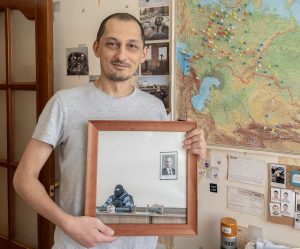The International Space Station (ISS), with seven crew members on board, had a tense 45 minutes on Thursday when it was thrown out of control and communication was lost intermittently. Reason: The jet thrusters of a newly-docked Russian research module inadvertently fired a few hours after latching on to the orbiting outpost, NASA officials said.
Also read: Light coming from behind a black hole detected, proves Einstein’s 100-year-old theory
It all began about three hours after the multipurpose Nauka module had docked with the space station that has been in space for the past 22 years. The module’s jets inexplicably restarted, causing the entire station to pitch out of its normal flight position some 250 miles above the Earth, NASA officials said, reports Reuters.
The seven crew members aboard – two Russian, three of NASA, a Japanese astronaut and a European space agency astronaut from France – were never in any immediate danger, according to NASA and Russian state-owned news agency RIA.
ALSO READ | Space geeks assemble!!! ISRO launches theme-based T-shirts, toys
The crew members were ‘never in any immediate danger at any time’, the reports added. A drift in the space station’s normal orientation was first detected by automatic sensors on the ground.
The loss of control lasted for a little more than 45 minutes, until ground teams managed to take control and restore the space station’s orientation by activating thrusters on another module of the orbiting platform, the agency added.
ALSO READ | NASA telescope caught in Webb of homophobia allegations. Explained
The struggle to take control was described by NASA specialists at the Johnson Space Center in Houston, Texas, as a ‘tug of war’ between two modules.
The malfunction has prompted NASA to postpone until at least Aug. 3 its planned launch of Boeing’s new CST-100 Starliner capsule on an uncrewed test flight to the space station. The Starliner had been set to blast off atop an Atlas V rocket on Friday from the Kennedy Space Center in Florida.
Also read: Chandrayaan 3 is likely to be launched in 2022
The Nauka engines were ultimately switched off, the space station was stabilized and its orientation was restored to where it had begun, NASA said.
The assembly of the 20-tonne Nauka multipurpose laboratory module started back in the 1990s but its launch — initially scheduled for 2007 — has been continuously delayed.
After its launch last week from Kazakhstan’s Baikonur Cosmodrome, the module experienced a series of glitches that raised concern about whether the docking procedure would go smoothly.
While Nauka’s main purpose is research, it will also provide “additional volumes for the workplaces and storage of cargo, places for water and oxygen regeneration equipment,” Roscosmos said.
It will also “improve the conditions of cosmonauts’ stay, providing an additional toilet and a third sleeping location for the Russian side of the ISS.






